Special Reports
The year 2019 marks the most challenging year in Manila Water’s history. For 22 years, the company has worked to improve water supply to the eastern half of Metro Manila, and has succeeded, year after year, despite the absence of an additional water source, in realizing operational efficiencies and excellent customer service in terms of 24/7 delivery of clean potable water, that is, until the summer of 2019.
This article intends to put on record the events that led to the crisis, what actions were done by Manlia Water and its key stakeholder partners, what lies ahead and most importantly, what the organization has learned to mitigate any future impact to the customers and utimately restore public trust.
MANILA WATER’S TWO DECADES OF IMPROVED WATER SERVICE
When Manila Water won the bid for the Metro Manila East Zone concession in 1997, only a quarter of the population in its service area had access to 24/7 water supply. Systems losses or non-revenue water from leaks and pilferages was at least 63 percent then, which meant almost two thirds of the water that was treated at the Balara Filters never reached the customer.
As part of the Concession Agreement with the Metropolitan Waterworks and Sewerage System (MWSS), Manila Water contractually should receive 40 percent of the MWSS raw water allocation of 4,000 million liters per day from the Angat-Ipo source which, for over two decades, remains the primary water source of Metro Manila.
Despite the challenges of the Asian financial crisis at the time, Manila Water invested in capacitating and motivating the workforce – the same people who used to run the government utility – and turned around the organizational culture into one that was merit-based and customer-centric. Novel technological solutions and territory management approaches were adopted, and there was heavy investment in replacing the antiquated pipes in the distribution network.
Five years after the start of the concession, the non-revenue water started to go down and settled at around 11 percent by the end of the first decade of operations up to the present. Recovered water from losses reduction, at least 750 million liters per day, became the water with which new customers were served, and in effect, the recovery of water losses could be seen as having averted the earlier onset of a water crisis as MWSS has not yet completed any major water source development projects, such as Laiban Dam or Kaliwa Dam. By the end of 2018, Manila Water had almost one million service connections in its concession area, the growth of which was fueled by giving water access to the base of the pyramid as well as expanding into unserved communities within the MWSS franchise area.
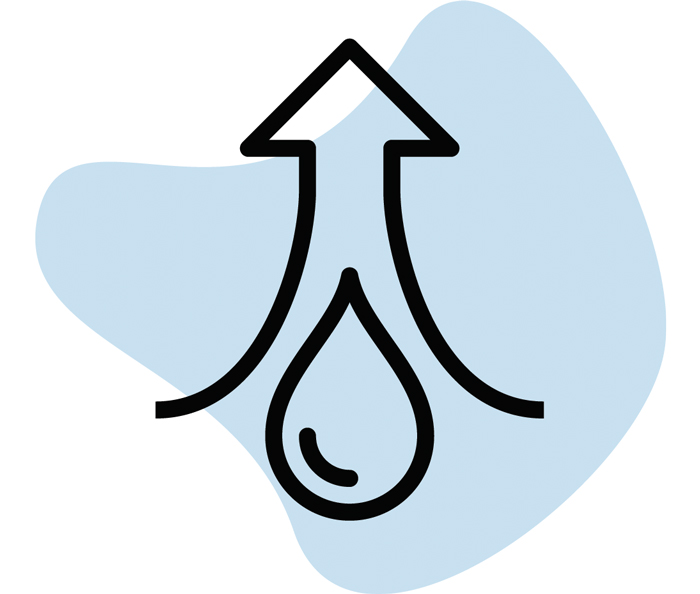
water recovered from network efficiency initiatives
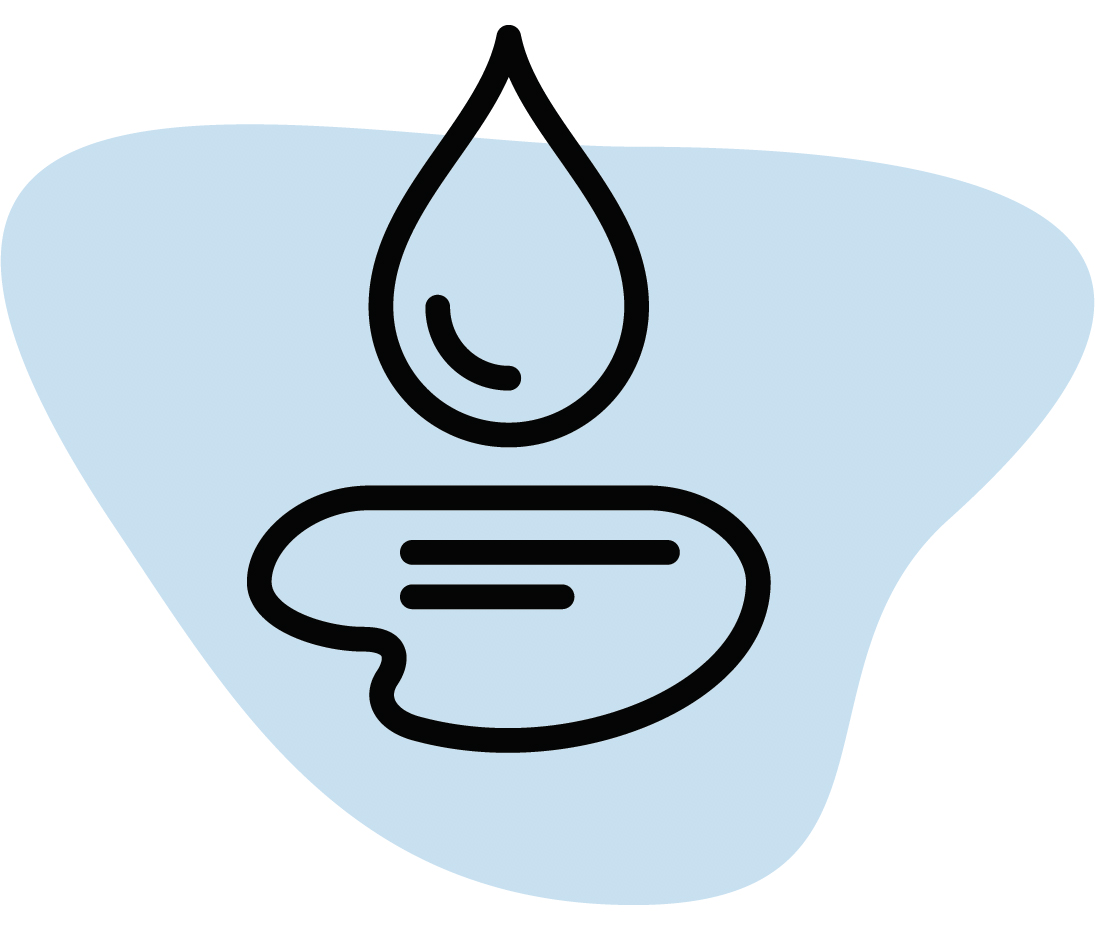
fixed raw water allocation from the Angat source since 1997
Despite the increase in customer base, Manila Water’s raw water allocation of 1,600 MLD from Angat has not increased since 1997. Laiban, Kaliwa or any new water source projects have been delayed and are yet to be implemented by the MWSS.
THE NEED FOR NEW WATER SOURCES
As the water security agency in Metro Manila and part of adjacent provinces, it is the mandate of MWSS to develop. The concessionaires’ role is to abstract raw water from the available sources, treat it to become potable and distribute it to customers, and provide sanitation and sewerage services. As early as 2003, after seeing the demand patterns and population growth projections in their respective concession areas, the two concessionaires already communicated to MWSS the need to develop new water sources.
The improvement in water supply availability for each Manila Water’s customers that led to billed volume growth in the last 22 years was driven mainly by efficiency in distribution network operations. But Manila Water knew that water recovered from reducing losses is finite. Non-revenue water at 11 percent is already considered world class, as evidenced by international accolades on Manila Water, and efforts in further reduction to single digit levels are deemed uneconomical and marginally beneficial to address the supply gap.
Demand and supply projections of MWSS and the concessionaires generally agreed that towards the end of the second decade of privatization, the gap between raw water supply and customer demand will be uncomfortably tight as summer peak demand equals the available raw water supply. The completion date of Laiban Dam, already in the MWSS drawing board since the 1980s, kept being pushed back due to environmental, social and governance issues. Further compounding the impending supply deficit was the decision of MWSS to provide raw water to the Bulacan Bulk System serving Bulacan municipalities using the same 46 CMS Angat water allocation for MWSS. By the year 2010, it was clear to everyone concerned that the large new water source will not be implemented in the next decade. According to MWSS, the completion of the delayed Kaliwa Dam project, intended to supply 600 MLD raw water to the concessionaires, is forecast to be operational in 2024, at the earliest.
Thus, in the 2013 and 2018 rate rebasing exercises when business plans were submitted, Manila Water proposed to develop medium-term water sources which would have served as a bridge between the limited water supply of Angat and the next big source which was to be completed by MWSS in 2024. Of the list of projects proposed by Manila Water, only the Rizal Province Water Supply Improvement Project (incorporating the Cardona Water Treatment Plant which takes raw water from Laguna Lake) was approved only two years after the 2013 rate rebasing, when the timelines were already tight. The rest were removed from the approved list of projects by MWSS, indicating that the projects will be implemented by the agency.
Manila Water proposed to develop medium-term water sources which would have served as a bridge between the limited water supply of Angat and the next big source
Despite the shortage of live water source development projects to serve Metro Manila’s future, Manila Water continued operating and adopting innovative solutions in order to sustain the customers’ experience of 24/7 reliable and clean water supply. The company started experiencing the demand versus supply pinch in the summer of 2016 but fortunately, it was able to harness stored water in the La Mesa reservoir as a buffer for peak demand. Thus, for succeeding years the customers did not experience major water interruptions or reduced pressure.

THE ONSET OF THE WATER CRISIS
The years 2018 and 2019 were marked by a mild El Nino which caused very little rainfall to replenish Angat, Ipo and La Mesa reservoirs. In fact, 2019 began with the water level in La Mesa at 74.87 meters above sea level, lower by 4.44 meters compared to average end-of year levels in the past decade. The stored water in La Mesa reservoir was rapidly being depleted and in the first week of March 2019, the water level reached an all time low, below the bottom gate of the intakes.
Considering the above, Manila Water developed months ahead a water augmentation and distribution plan, in preparation for the depletion of water in La Mesa, which consisted of:
However, Manila Water’s contingency plan met unfortunate and unprecedented outcomes. The National Water Resources Board did not approve the application to rehabilitate and install new wells (the approval was only given after the onset of the crisis). The water treatment plant in Cardona, already working on a tight timeline due to late approval by MWSS and with inherent difficulties at the start of construction, saw further delay in its completion due to a breakage in its effluent line despite an aggressive implementation plan.
From a customer experience point of view, the crisis was precipitated in the second week of March by the depletion of two distribution reservoirs which caused some areas in the concession to experience 24 hours of no water, particularly in several hard-hit neighborhoods in Mandaluyong and Quezon City.
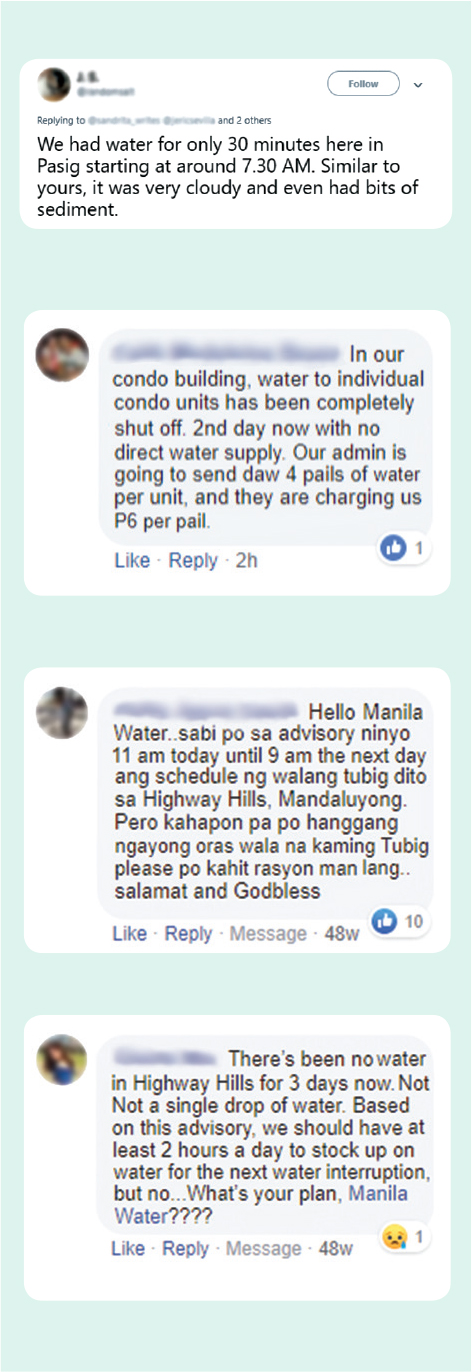
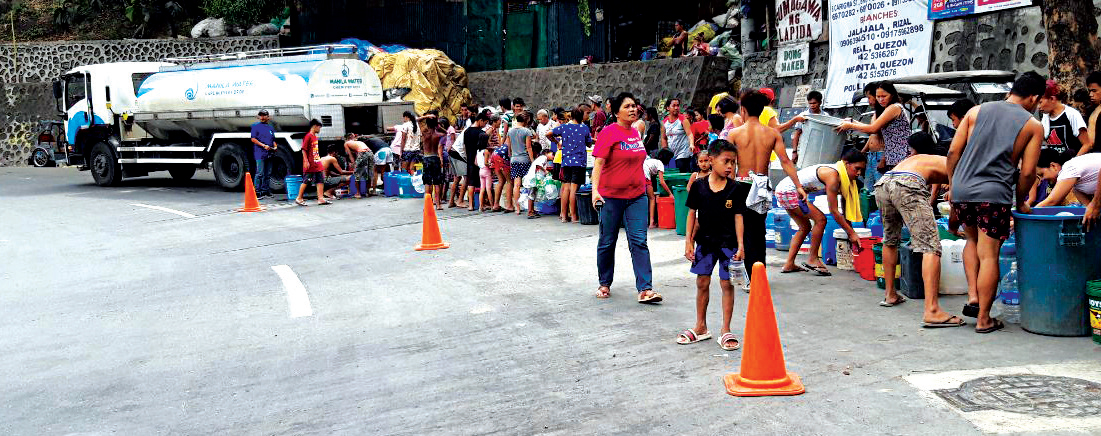
ANGAT DAM LEVELS IN 2010 AND 2019
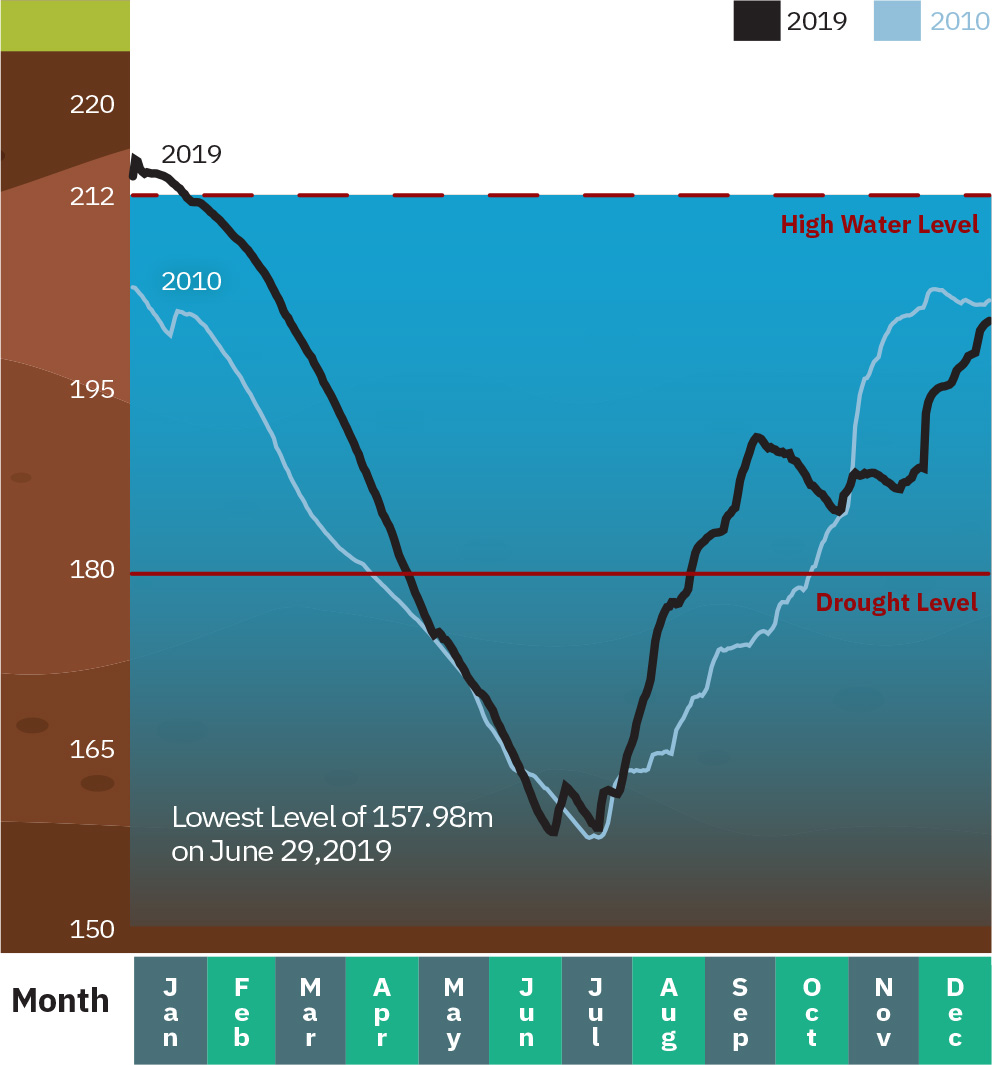
Both 2010 and 2019 saw historical lows of the reservoir water level in Angat. The water level drawdown in the summer months of 2019 was steeper than in 2010, another El Niño year. These indicate intense water withdrawals due to higher demand.
ANGAT DAM LEVELS IN 2010 AND 2019
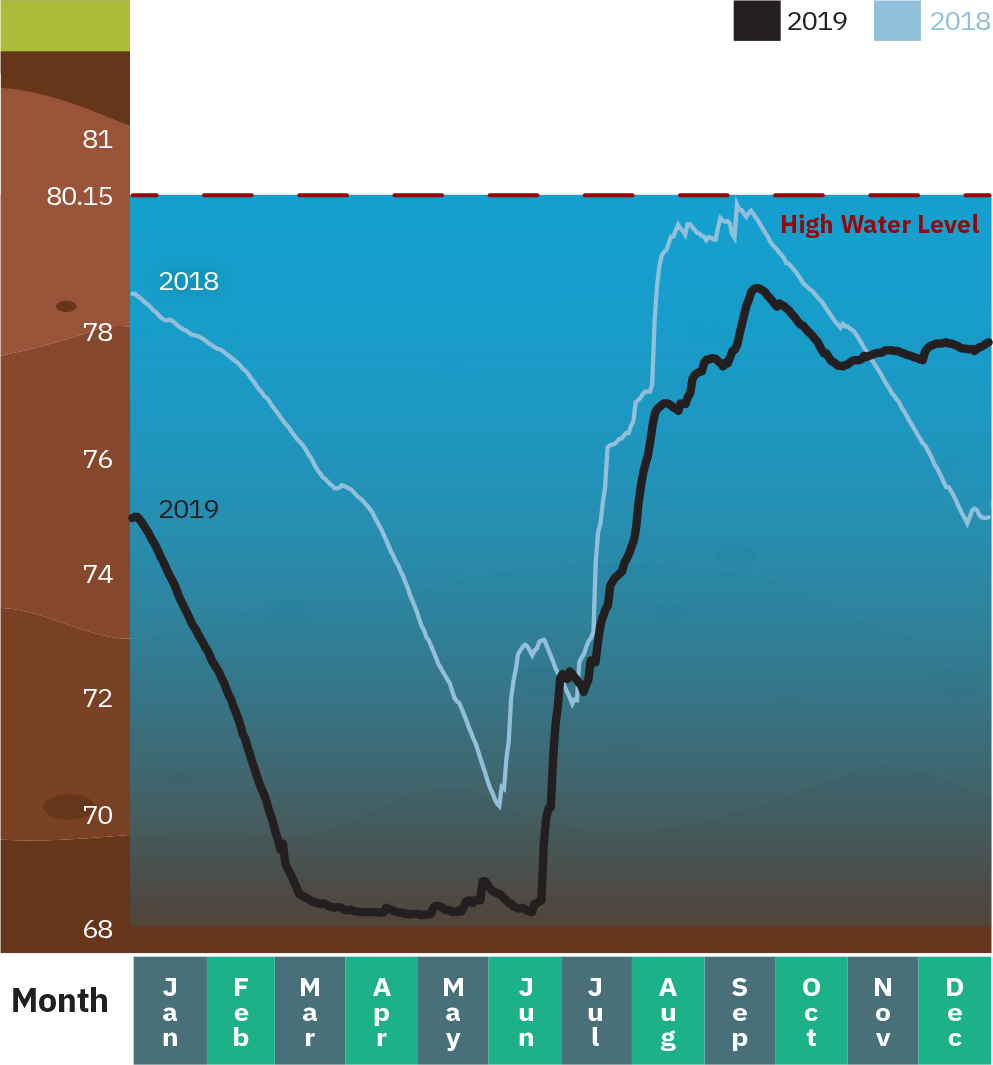
In the first quarter of 2019, the stored water in La Mesa was depleted due to more intense extraction to address the growing water supply deficit. Compared to the previous year, the lowest level was reached much earlier, at the start of summer.
Water demand has continuously grown through the years while raw water allocations from the Angat source have remained constant. The summer supply deficit reached a level where stored water in La Mesa reservoir can no longer provide enough buffer.
* Historical 8% increase in production for summer peak
** Transmission and distribution losses equal to 12% of total average production
*** projected billed volume based on approved RR18 business plan
SUMMER 2019 DEMAND AND SUPPLY SITUATION
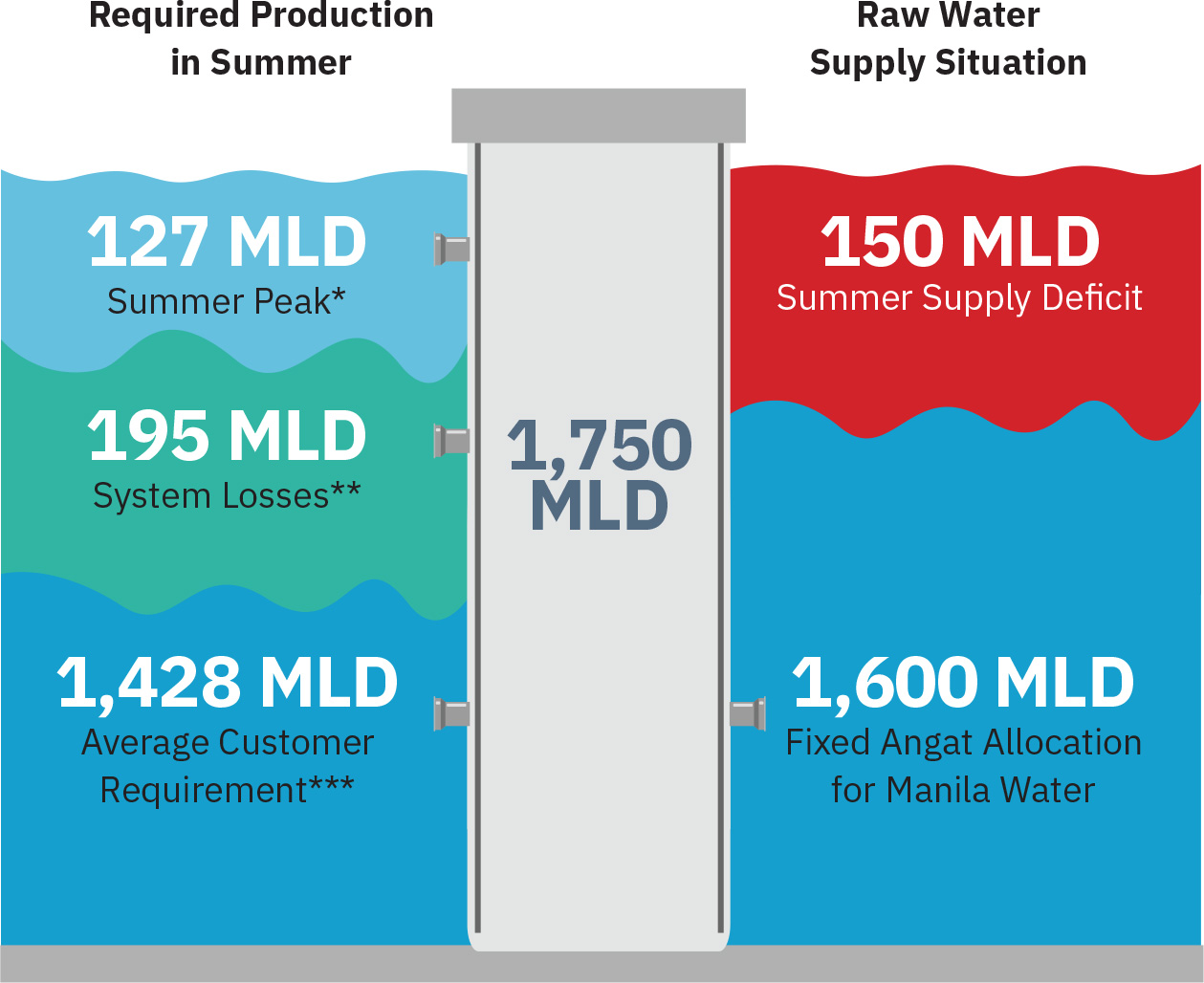
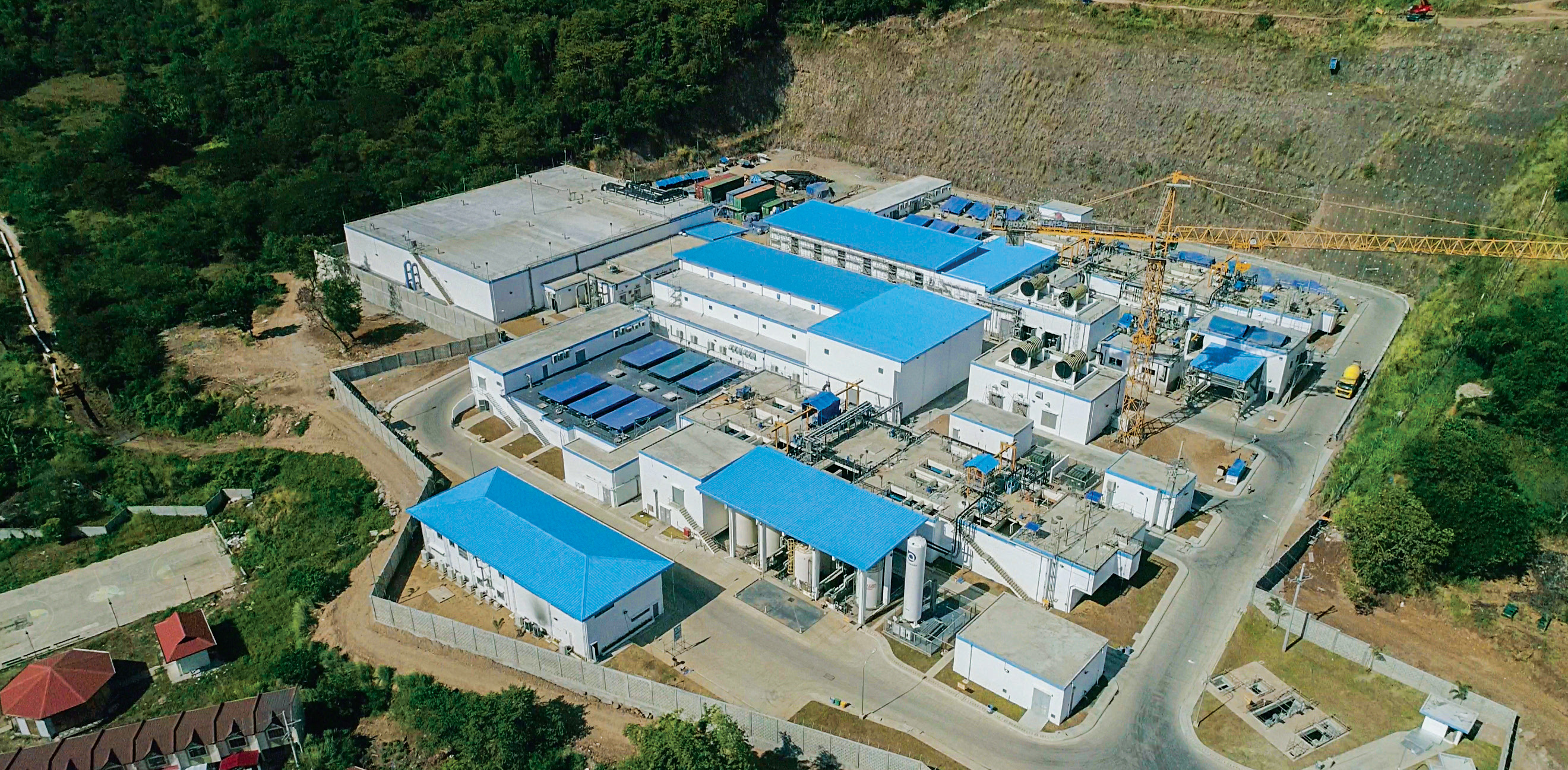
HOW MANILA WATER AND ITS PARTNERS RESPONDED TO THE WATER CRISIS
Manila Water’s Crisis Management Team (CMT) methodically restored services in a well-coordinated recalibrated implementation plan. Pressure management through network distribution adjustments were done to manage demand and equitably distribute available supply across the entire service area. With improved coordination with government agencies and customers, implementation of supply augmentation projects utilizing the entire pool of contractors were completed on target, restoring the service to almost 24/7 by mid-June and within the regulatory standard of 7 psi.
As the El Niño condition continued with less than normal rainfall, Angat’s water levels went down at a faster pace compared to previous years, attaining historical lowest levels. NWRB decided to reduce the allocation to MWSS by 20 percent, from 46 CMS to 40 CMS, further complicating the raw water supply problem not just in the East Zone but in the West Zone as well.
Manila Water’s CMT, together with the resilient workforce of the enterprise, and with the support of regulators and other stakeholders, continue to diligently implement its contingency plans. With this, the company is able to achieve and maintain 24/7 water supply despite the reduction in NWRB allocation.
The following are the key actions taken by the company to restore water services to customers, with support from key stakeholders:
Pressure Management
Manila Water’s immediate actions when the widespread imbalance in the distribution system occurred was to adjust the operating pressures across the more than 1,800 district metering areas (DMA). Pumping stations adjusted their outputs and network managers reverted to the manual yet complex system of manipulating more than 400 valves across the network to make daily real time adjustments in flow depending on reported experiences from customer kasanggas. More than 60 line boosters were installed so that water can reach the farthest and highest places in the network.
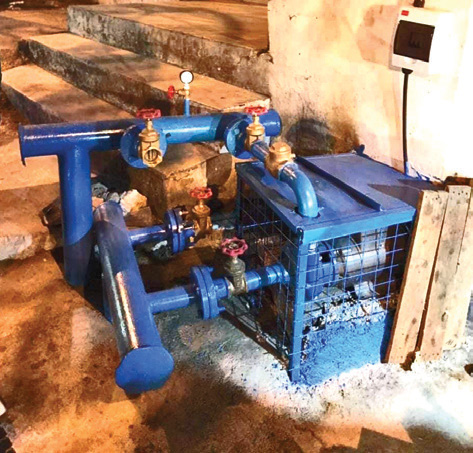
Pressure management through network distribution adjustments were done to manage demand and equitably distribute available supply across the entire service area.
The dataloggers installation project, originally meant for managing non-revenue water by monitoring flowrates in the DMAs in real time, was re-scoped to monitor water pressure at benchmark customers in each DMA, especially in hard hit areas, thus helping provide better situational awareness and augment the information from the walk-the-line efforts of territory managers. A welcome and unexpected development in the pressure reduction initiative was the attainment of non-revenue water to an historical low of 7.5 percent which meant additional water recovered for customers to use.
Supply Augmentation with Deep Wells
Setting aside environmental arguments against using groundwater, and with the endorsement of MWSS and NWRB, the DENR secretary himself approved the construction of new deep wells on top of the rehabilitation of old MWSS wells in order to augment the water coming from Angat during the summer season. The Manila Water CMT deployed a team of project managers and vendors to rehabilitate old wells, and construct and energize new wells with 55 MLD capacity in strategic areas in the East Zone.
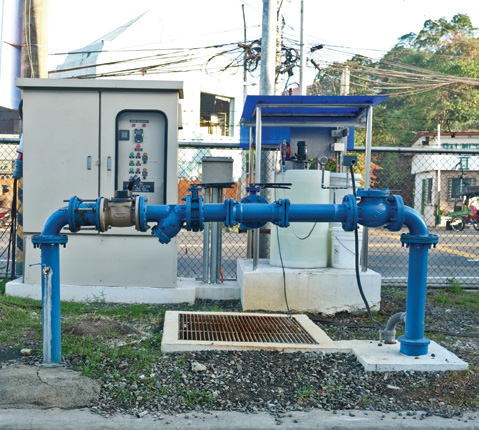
Energization of the Cardona Water Treatment Plant
Manila Water commissioned in mid-March the first phase of the Cardona water treatment plant with a production capacity of 50 million liters per day, attaining full production in early May. Originally meant for the expansion areas in the lakeshore towns of Rizal, the water produced was diverted via an ‘atras’ line, laid in 2018, to augment the supply to the central distribution system. Phase 2 of the Cardona Water Treatment Plant with a further 50 MLD in capacity was completed in August, realizing the 100 MLD full supply capacity for the customers.
Cross Border Flows from Maynilad
Maynilad expressed support in providing cross border flows to Manila Water in the early days of the crisis, promising as much as 50 MLD. However, the maximum flow attained was only 15 MLD. As Angat levels dropped further at the height of the dry season, Maynilad also had its own supply crisis which led to the suspension of cross border flows.
Preparation of Medium and Long Term Water Sources
Given the current outlook on the Kaliwa and Laiban Dam completion dates due to issues in procurement, environmental permitting and social safeguards, the MWSS reconsidered and approved the projects proposed by Manila Water in previous rate rebasing exercises, particularly the Tayabasan Dam (Calawis) project and the Laguna Lake East Bay water supply project. The Laguna Lake Development Authority endorsed these projects as well, acknowledging in its recently completed master plan that the freshwater lake is a potential water source for Metro Manila and adjacent provinces. By the end of 2019, MWSS also approved a supply augmentation initiative that will utilize Marikina river as an alternative water source.
Responsible Use of Water Campaign
Manila Water, together with the leadership of NWRB, MMDA DPWH and local government units, developed an information, education and communication campaign to encourage the general populace to help conserve water by using water wisely and implement water efficiency measures in the household, leveraging on social media as a platform for engagement.
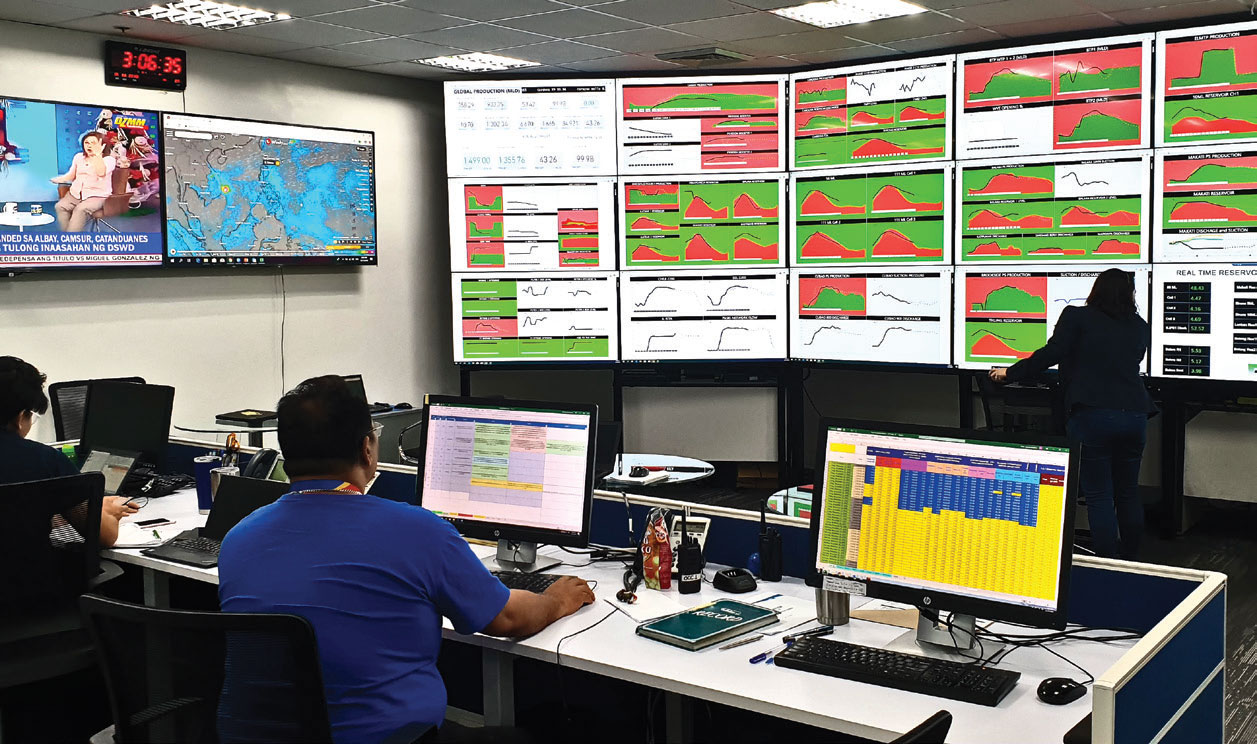
LEARNING FROM THE CRISIS
The water crisis that started in 2019 was an eye opener for Manila Water and its stakeholders. While water supply had been repeatedly identified as a top risk, the company’s efforts towards improving operational resilience has been inadequate to prevent the onset of an incident which caught everybody off guard, propelling action at the national and local levels. There is an imperative to do better.
strengthening of partnerships, through constant communication, shared information, co-management of risks and alignment of resources, which will deliver improved water security and better service in the future
Even if the company has managed to restore service to 24/7 but at lower pressures, the fact remains that Metro Manila’s water security is still on edge until the next big water source is completed by the water security agency. In the meantime, Manila Water keeps looking for ways to reduce losses, improve operational efficiency, deliver the MWSS-approved medium term water sources, and engage the regulators and the public in a continuing discussion of the real water situation to encourage water conservation at the community and personal levels.
Manila Water understands that water crises are not solved by stakeholders working in silos. More than ever, it is the strengthening of partnerships – through constant communication, shared information, co-management of risks and alignment of resources – that will deliver improved water security and better service in the future. The company’s partnerships and relationships with partners and customers have repeatedly weathered crises, and Manila Water is hopeful that ongoing efforts will regain stakeholder trust.